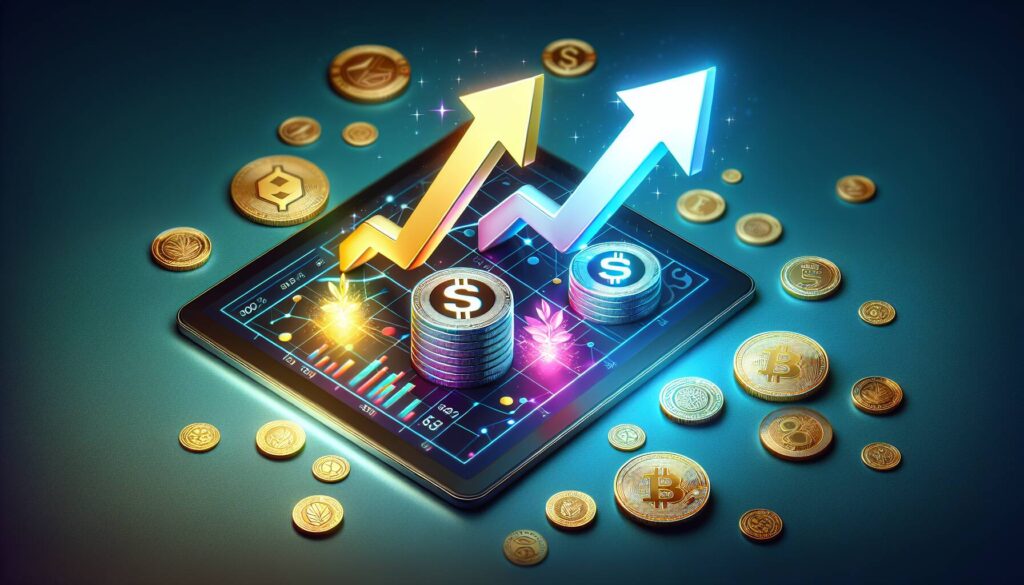XRP is currently experiencing a notable surge in trading activity, demonstrating signs of accumulation as it breaks through the key resistance level of $2.28, fueled by rising market volumes. Between July 6 and July 7, the cryptocurrency climbed 2.36%, moving from $2.21 to $2.26, while trading volumes notably peaked at over 67 million in a single hour. This upward momentum is being strongly supported by recent developments surrounding Ripple Labs’ pursuit of a national bank charter with the U.S. Office of the Comptroller of the Currency (OCC).
The application for a bank charter has sparked renewed interest among investors, highlighting the potential for Ripple to operate as a federally regulated trust bank. Should the application receive approval, this would signify a significant advancement toward integrating cryptocurrencies with traditional banking practices. Analysts speculate that such a development could lead to higher institutional adoption of XRP, particularly in sectors involving global payments and stablecoin issuance. Additionally, there’s growing anticipation regarding a U.S.-based XRP spot ETF and Ripple’s potential access to a Federal Reserve master account, further positioning the cryptocurrency for long-term growth.
From a technical perspective, XRP has not only shown resilience but also a clear bullish trajectory. The trading analysis reveals a firm support range between $2.24 and $2.25, where buyers have effectively absorbed selling pressure during drops. In the latest trading session, after a brief dip, XRP demonstrated its strength by breaking the $2.26 resistance and closing at $2.27, underpinned by significant buyer interest as evidenced by volume spikes. Analysts are keeping a watchful eye on resistance levels around $2.29 to $2.30, with upward targets suggesting the potential for movement towards the $2.60 to $3.40 range if current momentum persists through the critical $2.38 breakout zone.

XRP Accumulation and Market Dynamics
Key Points:
- XRP Breaks Resistance: XRP surpassed the critical $2.28 resistance zone, indicating strong buyer interest.
- Surging Volume: Peak hourly trading volume exceeded 67 million, highlighting increased market activity.
- Bank Charter Application: Ripple Labs’ application for a national bank charter with the OCC has renewed investor confidence.
- Potential for Institutional Adoption: If approved, the charter could facilitate XRP’s integration into the traditional banking system, accelerating institutional use for payments and stablecoin issuance.
- Support Range Established: Buyers consistently defended the $2.24–$2.25 support zone, indicating market strength.
- Future Upside Potential: Analysts project potential price targets between $2.60 and $3.40 if XRP maintains upward momentum.
This accumulation and technical setup can impact investors by potentially providing profitable trading opportunities and more widespread adoption of XRP as a legitimate financial asset.
XRP’s Bullish Momentum: A Comparative Analysis
Currently, XRP is experiencing a notable upward trend, having recently surpassed the significant $2.28 resistance level. This positive movement is in stark contrast to several other cryptocurrencies that struggle to maintain stability amidst regulatory uncertainties and market volatility. For instance, Ethereum has faced challenges due to ongoing debates about its scalability and energy consumption, which have hindered its price rally compared to XRP’s recent success.
One competitive advantage of XRP lies in its potential regulatory approval as a bank charter, granting Ripple the ability to operate under federal guidelines. This development could facilitate trust among institutional investors, much needed when compared to cryptocurrencies still battling for regulatory clarity. Additionally, the anticipation for a U.S.-based XRP spot ETF positions it favorably in the eyes of investors seeking legitimate options within the crypto space.
However, there are inherent disadvantages. Should market sentiment shift dramatically, XRP’s rapid ascent could lead to heightened volatility. The recent surge in trading volume may attract speculative investors, who could contribute to price instability should they choose to exit positions rapidly. In contrast, more established cryptocurrencies tend to stabilize faster due to their larger market caps and investor base.
Who stands to benefit from XRP’s rise? Primarily, institutional investors looking for innovative solutions in global payments and stablecoin issuance could find XRP’s trajectory appealing, reinforcing their participation in the crypto market. Conversely, traditional banks and financial institutions may feel pressure from XRP’s advancements in integration, prompting them to adopt similar technologies or partnerships to remain competitive. This shift could create friction in the traditional banking sector as they adapt to the growing influence of digital assets.
As XRP navigates this crucial phase of potential growth, the implications of its advancements impact not just competitors but the wider financial landscape, signaling a significant shift towards a more integrated digital economy.

















